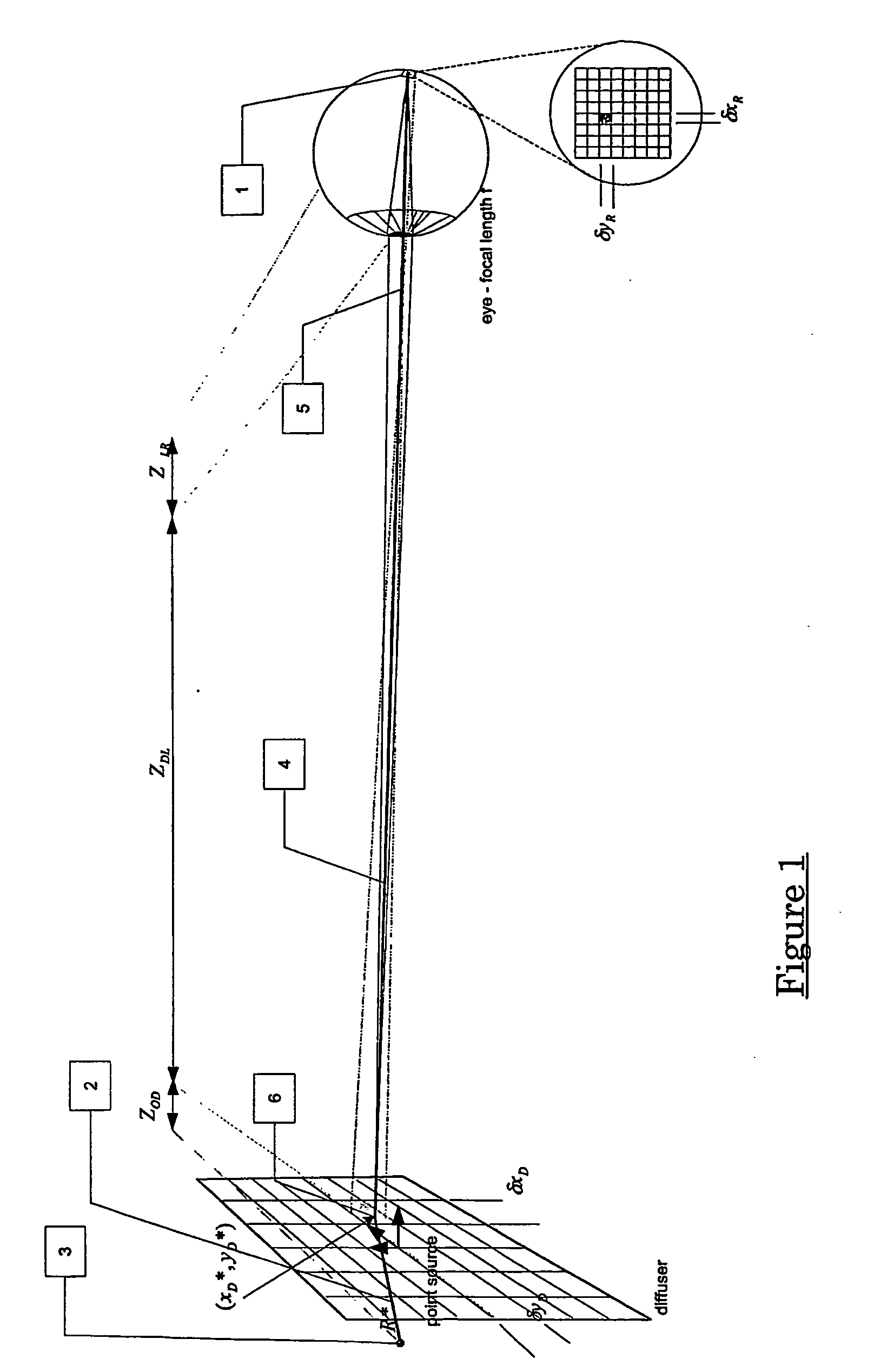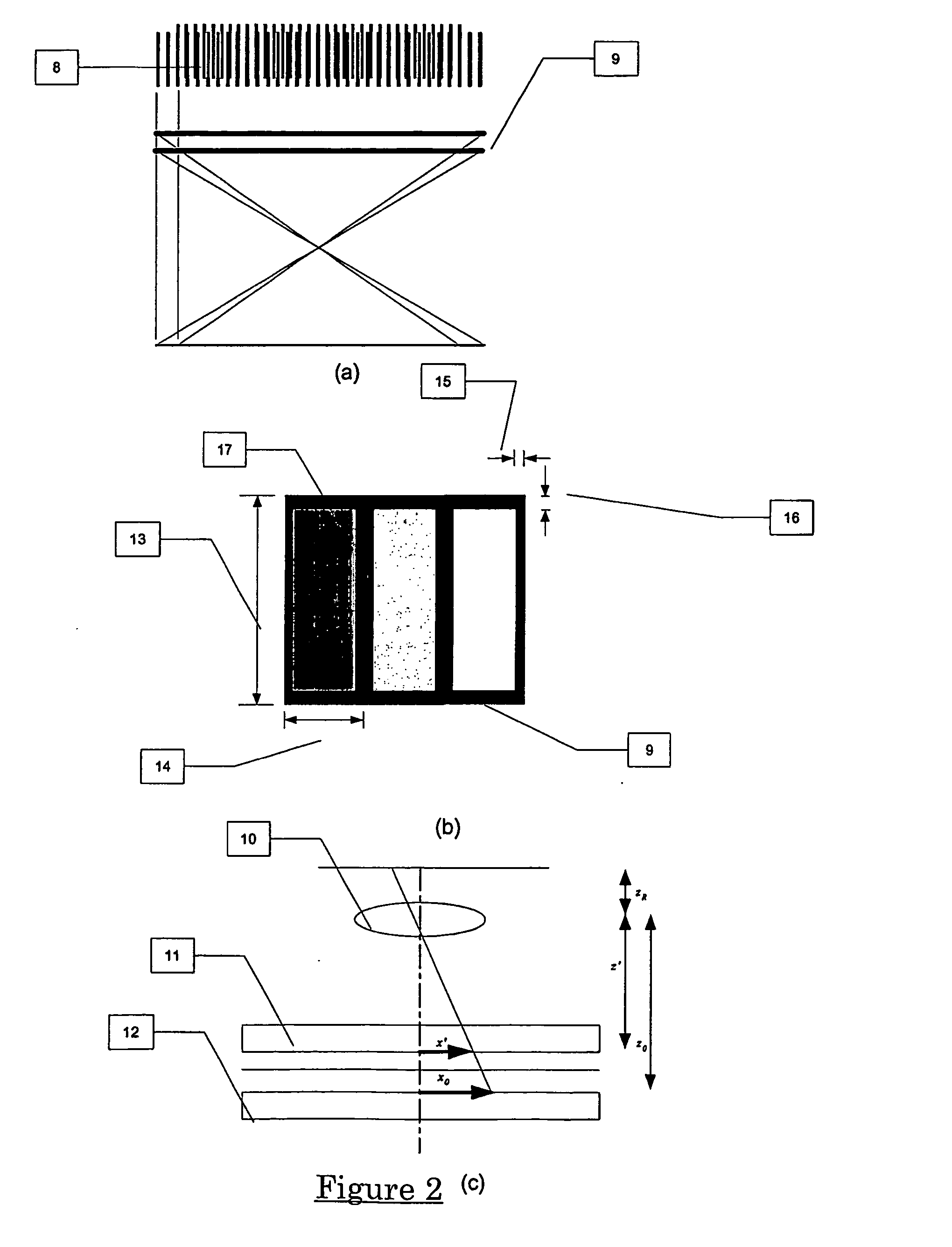Method to control point spread function of an image
a technology of image spread and control method, which is applied in the field of improved imaging technology, can solve the problems of slow response time and imprecise voltage control, hinder the ability of passive matrix, and inconvenient control of imprecise voltage, so as to save development time and cost, not to over blur the image, and to reduce contrast
- Summary
- Abstract
- Description
- Claims
- Application Information
AI Technical Summary
Benefits of technology
Problems solved by technology
Method used
Image
Examples
Embodiment Construction
[0094] At present there exist methods to produce displays where several imaging planes are stacked with set distances between them. These imaging planes may also be stacked as closely as possible. These displays consist of a high-brightened backlight, a rear image panel which is usually an active matrix, colour display, a diffuser and a front image plane, which are laminated to form a stack. There are generally colour filter stripes, and a black matrix on each display which defines the borders of the pixels. However it should be appreciated that the following discussion applies to all addressable object planes that are addressed by passive or active matrices or have colour filters, or any periodic pattern. For the purposes of the present invention these addressable object planes may not be addressable at all.
[0095] It is an object of the present invention to address the foregoing problems or at least to provide the public with a useful choice.
Further aspects and advantages of the...
PUM
| Property | Measurement | Unit |
|---|---|---|
| wavelength | aaaaa | aaaaa |
| wavelength | aaaaa | aaaaa |
| elliptical angles | aaaaa | aaaaa |
Abstract
Description
Claims
Application Information
 Login to View More
Login to View More - R&D
- Intellectual Property
- Life Sciences
- Materials
- Tech Scout
- Unparalleled Data Quality
- Higher Quality Content
- 60% Fewer Hallucinations
Browse by: Latest US Patents, China's latest patents, Technical Efficacy Thesaurus, Application Domain, Technology Topic, Popular Technical Reports.
© 2025 PatSnap. All rights reserved.Legal|Privacy policy|Modern Slavery Act Transparency Statement|Sitemap|About US| Contact US: help@patsnap.com



